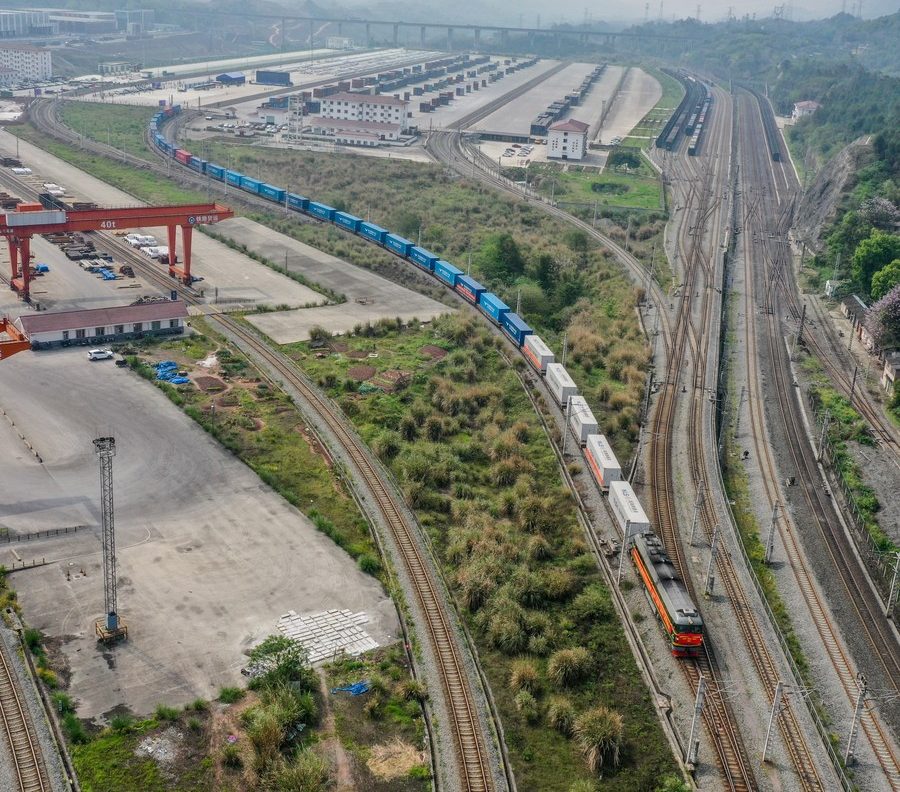 The Horgos Port and the Alataw Pass, two major railway ports in northwest China’s Xinjiang Uygur Autonomous Region, have handled more than 4,000 China-Europe freight train trips since the beginning of 2024, accounting for over 40% of the national total.
The Horgos Port and the Alataw Pass, two major railway ports in northwest China’s Xinjiang Uygur Autonomous Region, have handled more than 4,000 China-Europe freight train trips since the beginning of 2024, accounting for over 40% of the national total.
Xinjiang has adopted paperless operations for information exchange between customs and railway departments, effectively streamlining procedures for freight trains. These measures have played an important role in boosting trade among the countries and regions participating in the Belt and Road Initiative.
To date, the number of China-Europe freight train trips passing through the two ports has exceeded 72,000 since the ports kicked off operations, Urumqi Customs said on April 12, 2024, adding that the two ports have continued to enhance their services for the freight trains.
“The Alataw Pass has set up a dedicated window for China-Europe freight trains, offering a variety of streamlined customs clearance measures. We also actively engage with enterprises, offering guidance on declaration procedures and addressing any queries they may have,” Wu Nanshi, a customs officer at the Alataw Pass said, according to a press release of the State Council of China.
As the volume of the freight trains from Chian to Europe and trade exchanges continue to rise, the range of goods transported by these freight trains has diversified. Previously limited to items like clothing, shoes, and hats, now it includes large-scale equipment, automobiles, lithium batteries, and other products.
At present, the Alataw Pass boasts 118 operating routes for such freight trains, facilitating connections with 21 countries and regions, while the Horgos Port offers 80 operating routes, linking 45 cities and regions across 18 countries.
The Horgos Port handled 1,021 freight trains from China to Europe in 2023, an increase of 2.1 percent year on year. Since the beginning of 2023, the border port has been continuously optimising the operation of the rail freight services towards Europe, realising steady growth in both the number and the volume of freight trains through improving the efficiency of reloading and organising.
Share on:



